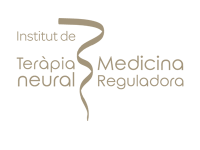
10 Minutes
CONTENTS
Residential treatment for children and teens is the most intensive type of treatment available. Although still living at home, certain children, young people and adolescents can get mental health care and therapy. Others, however, who have major behavioral issues or live in unsafe environments, will have to live in a residential setting with ongoing medical care.
Residential luxury rehab is only sought-for if other, less intensive community-based treatments have failed or if outpatient treatments are insufficient to meet the young person’s needs. To put it another way, residential treatment is the last resort after you’ve exhausted all other options.
Psychiatric in-patient care in a healthcare institution is not the same as a residential treatment program is. Residential programs normally include lengthier stays, whereas psychiatric treatment is primarily for persons in crisis who need help for a short amount of time.
Making the decision to put a child or adolescent in a residential treatment center can be a difficult one. The type of assistance provided inpatient psychiatric care to a family varies by location, but it may include:
- Training programs for parents and guardians
- Family therapy or counseling
- During moderated family visits, in-home support to help families and adolescents adopt new strategies
- Parents or guardians who are concerned about their teen or young adult’s behavior might join support groups conducted by and for them.
- Support via telephone
- Mental health awareness and education
FAQs
A UNIQUE METHOD TREATING Mental Health
a successful and proven concept focusing on underlying causesMental Health TREATMENT LASTING APPROACH
0 Before
Send Admission Request
0 Before
Define Treatment Goals
1 week
Assessments & Detox
1-4 week
Psychological & Holistic Therapy
4 week
Family Therapy
5-8 week
Aftercare
12+ week
Refresher Visit
Mental Health Insights
latest news & research on Mental Health
Mental Anguish
Mental anguish, a severe and extreme type of emotional pain, can cause profound and extensive effects on the life of a person
read more


































































